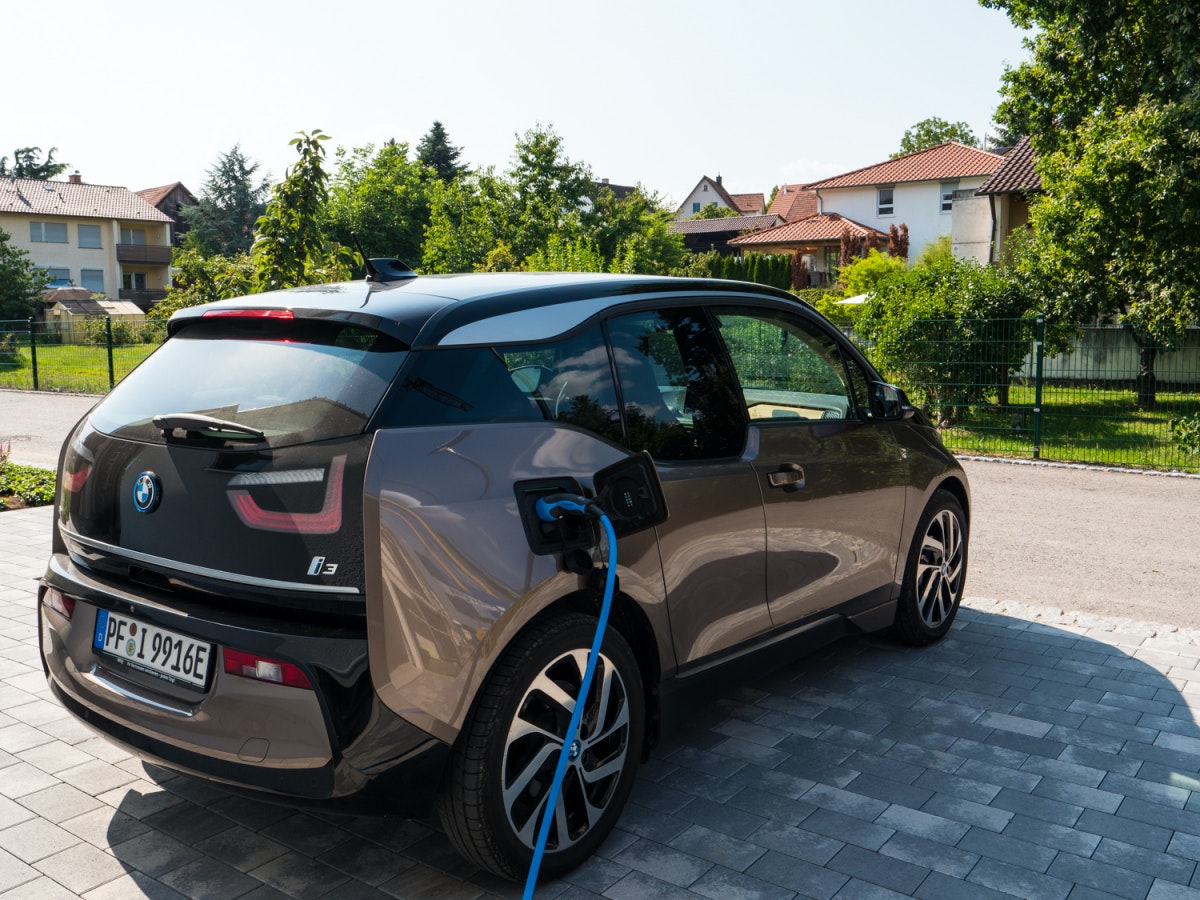Charge the electric car with the photovoltaic system
No time right now?
The energy and transport transition go hand in hand – and even today those who live in their own home with a photovoltaic system can charge their electric car with environmentally friendly solar power. An experience report.
Two years have now passed since we moved into our new home. It was already clear to us during the planning phase that we wanted to build as sustainably and energy-efficiently as possible. In addition to an appropriately insulated building envelope and the use of natural materials, this means above all that both heating and domestic water heating are taken over by a heat pump.
Another aspect is energetic self-sufficiency. With a heat pump and two electric cars, the electricity consumption in our household is correspondingly high. To counter this, we had a photovoltaic system and electricity storage installed during the construction phase. This enables us to achieve an annual degree of self-sufficiency of 81 percent. In other words: We only have to cover 19 percent of our annual energy requirements with electricity from the public grid.
The calculation is quite simple: For every generated kilowatt hour of electricity that we feed into the grid, we receive 10.48 cents (feed-in tariff). For every kilowatt hour of electricity generated that we use ourselves, we pay around 9 cents (taxes) instead of 30 cents from the network operator. With an annual electricity consumption of 10,000 kWh, of which the photovoltaic system covers 8,100 kWh, this means a saving of 1,700 euros plus feed-in tariff.
Depending on the size of the system, a photovoltaic system pays for itself after 9 to 13 years – with a guarantee period of 25 years.
Photovoltaic system: solar power for the electric car
In recent years, both the modules for photovoltaic systems and the power storage have become significantly cheaper. At the same time, however, the feed-in tariff for new systems also fell continuously. This means that a photovoltaic system is economically “lucrative” above all if you use as much electricity as possible yourself and feed in as little as possible – keyword optimization of self-consumption.
On the one hand, you can use an electricity storage device for this – and thus use the electricity generated during the day in the evening and night. On the other hand, of course, an electric car that can be charged with solar power. Or both in combination.
For example, we need around 4,500 kWh of electricity a year for our two electric cars alone. Another 4,000 kWh for our heat pump. A normal-sized photovoltaic system with 9 kWp delivers around 9,000 kWh annually.
Smart energy management is crucial in this context. With us, for example, all consumers in the household (heat pump, washing machine, light, etc.) are supplied first. Then the power storage is charged. The “surplus” then ends up in our electric cars. This results in a charging power between 2 kW and 11 kW, depending on the season. We don’t have to worry about anything because the energy manager of the photovoltaic system communicates intelligently with the consumers in the household, the electricity storage system and the wallbox.
Help shape the transport and energy transition
I am often asked whether investing in a photovoltaic system is really worthwhile. For this reason, I have primarily discussed the economic aspects in the previous paragraphs. Buying or building a house is already associated with high costs, so arguments such as sustainability and self-sufficiency often take a back seat. Ultimately, a photovoltaic system is actually the only part of a house that pays for itself – and even generates a return over 25 years.
In conjunction with one (or two) electric cars, there is another factor: you drive almost for free. If you charge a BMW i3 with solar power, the cost per 100 kilometers is around 1.40 euros. With an EQC or E-Tron it is 2.30 euros.
The initial investment of EUR 20,000 for a photovoltaic system (10 kWp) including storage (8 kWh) pays for itself very quickly in this way – and you are still doing something good for the environment.



